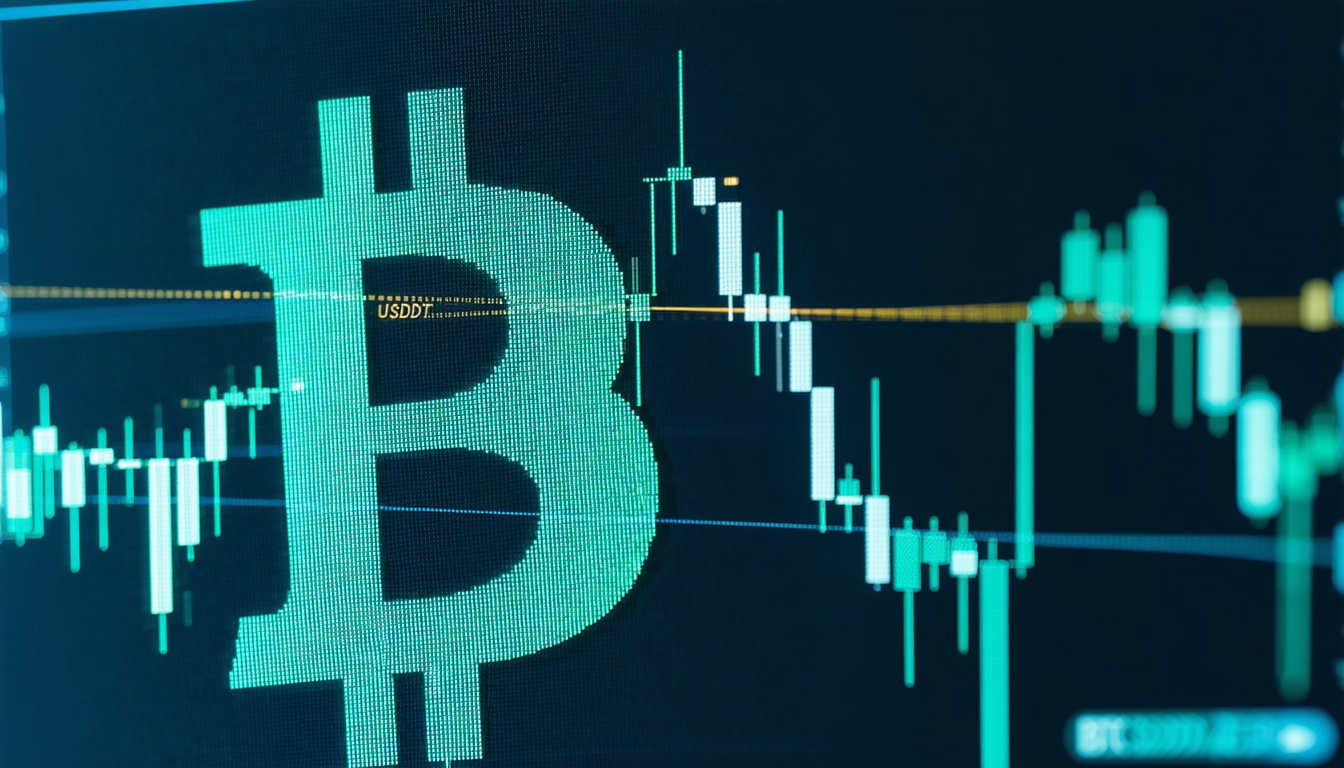The price of Bitcoin (BTC) against Tether (USDT) sits at the very center of the cryptocurrency trading universe. Whether you are an active trader, a long-term investor, or simply curious about digital assets, tracking the BTC USDT current price is both an opportunity and a challenge. Markets shift in seconds, and fortunes are made or lost on the difference between entry and exit points. This article promises to guide you through understanding the BTC USDT current price, equipping you to make informed decisions and track live exchange rates with clarity and confidence.
What Does BTC USDT Current Price Mean?
Definition, Scope, and Relevance
At its core, the BTC USDT current price represents the current exchange rate between Bitcoin (BTC), the world’s flagship cryptocurrency, and Tether (USDT), a leading stablecoin anchored to the US dollar. When you view any BTC/USDT trading pair on a cryptocurrency exchange, the quoted figure tells you how many USDT units are required to purchase one Bitcoin at that moment. Unlike more traditional markets, BTC USDT prices are available 24/7 and reflect real-time market dynamics.
This metric is significant because USDT offers stability in an otherwise volatile environment. It acts as a digital stand-in for cash, allowing traders to seamlessly move in and out of Bitcoin positions without converting assets back to fiat. For anyone looking to capitalize on cryptocurrency price fluctuations or safeguard their holdings, following the BTC USDT rate is indispensable.
Why BTC USDT Matters for Crypto Traders and Investors
For traders, the BTC USDT current price provides a real-time reference for decision-making—whether entering or exiting positions, setting stop-losses, or planning arbitrage between exchanges. Investors, meanwhile, monitor this rate to identify buying opportunities or protect against downtrends by parking funds in USDT during volatility. Being attuned to this price helps mitigate risk and optimize return, especially in the fast-paced world of digital assets.
Framework for Tracking and Interpreting BTC USDT Prices
Understanding and leveraging the BTC USDT current price requires a systematic approach. Here’s how savvy participants monitor, interpret, and act on this ever-changing number.
Actionable Pillars for Smart Price Tracking
1. Choosing Your Data Sources
Not all data sources are created equal. Leading exchanges like Binance, Coinbase Pro, and Kraken publish live BTC USDT rates. For a consolidated view, reputable data aggregators such as CoinMarketCap or CoinGecko compile prices across dozens of platforms, helping spot discrepancies and price anomalies.
2. Analyzing Price Movements and Chart Patterns
Beyond the headline price, analyze candlestick charts, volume metrics, and order books. Short-term traders often deploy technical analysis—using moving averages, Relative Strength Index (RSI), and support/resistance levels—to anticipate movements. Long-term investors look for macro patterns and significant breakouts before allocating capital.
3. Factoring in Market Liquidity and Slippage
BTC USDT is among the most liquid crypto markets, but sudden surges in trading can lead to slippage, where executed prices deviate from expectations. Monitoring the depth of the order book and spreads can help you understand the true cost of trading, particularly during high-volatility events.
4. Navigating External Influences: News and Sentiment
Global events, regulatory changes, macroeconomic shifts, and major exchange outages can dramatically affect the BTC USDT current price. Tools that track news headlines and aggregate market sentiment (such as The Tie or CryptoQuant sentiment indices) offer an edge in anticipating sharp moves.
Essential Tools and Metrics for Real-Time Monitoring
- Live Price Widgets: Real-time tickers from CoinMarketCap or TradingView provide windowed BTC USDT rates.
- Technical Analysis Platforms: Services like TradingView offer both analytic and charting capabilities.
- Volatility Trackers: Monitor the Bitcoin Volatility Index (BVOL) for a gauge on market turbulence.
- Order Book Visualizers: Depth charts from exchanges reveal current buy/sell interest and highlight potential price barriers.
- Mobile Alerts: App-based notifications ensure you don’t miss critical price thresholds, wherever you are.
Data & Proof: Key Figures Shaping the Market
Vital Statistics from the Crypto Landscape
- In 2023, the average daily trading volume for the BTC USDT pair exceeded $20 billion, cementing its status as the highest-volume cryptocurrency trading pair worldwide (CryptoCompare, 2023).
- Bitcoin’s annualized volatility stood at approximately 60% over the past year, compared to just 2% for the US dollar index (Coin Metrics, 2023).
- During times of regulatory uncertainty, up to 35% of BTC trading volume temporarily shifted into USDT-pegged pairs versus fiat pairs—underscoring traders’ reliance on stablecoins in turbulent periods (Kaiko, 2023).
Interpreting the Numbers: What They Mean for You
These figures highlight two critical realities: first, BTC USDT is the primary battleground for crypto price discovery, drawing massive capital and attention. Second, wild price swings remain commonplace, making real-time tracking and disciplined risk management non-negotiable. For traders and investors alike, understanding volatility and liquidity dynamics is key to maximizing opportunity and minimizing losses.
Practical Examples: Real-World Application
Example A: Day Trader’s Response to BTC USDT Price Movement
A seasoned crypto day trader watches as the BTC USDT current price drops sharply after a regulatory headline out of the US. She sets conditional buy orders at the next technical support level. The price rebounds within hours, triggering her orders at a discount. She then sells portions gradually as price recovers, generating a 5% position gain in a single trading session—demonstrating how timely action on live price data can create tangible results.
Example B: Investor Opts for Stability During Volatility
Contrast this with a long-term investor who, seeing heightened volatility reflected in BTC USDT charts and news, shifts his Bitcoin allocation into USDT to avoid short-term losses. He avoids a 10% drawdown during a week-long bear trend. He later re-enters the market when the price stabilizes, preserving his capital—showing how awareness and responsiveness to the BTC USDT current price can protect gains and limit downside risk.
Common Mistakes and How to Avoid Them
Trading the BTC USDT pair can be rewarding but is fraught with avoidable errors. Here are several pitfalls and how to sidestep them:
- Relying on a Single Exchange: Price discrepancies can exist between platforms, especially during volatile swings. Always cross-verify rates among major exchanges.
- Ignoring Fees and Spreads: Trading costs and spread widths can erode profits, particularly with high trade frequency. Use exchanges with competitive fee structures and monitor the order book.
- Overreacting to News: Knee-jerk reactions to media reports may lead to poor timing. Combine news awareness with chart-based evidence before acting.
- Failing to Set Stop-Losses: Not establishing clear exit levels can magnify losses if markets move against you. Discipline in risk management is essential.
- Neglecting Stablecoin Risks: USDT is widely used but not immune to controversy. Understand the underlying mechanics and risks of stablecoins before trusting them as a safe haven.
Implementation Checklist: Tracking BTC USDT with Discipline
- Identify and bookmark two trusted price sources for BTC USDT current price updates.
- Set up real-time price alerts for critical thresholds using your preferred app or platform.
- Regularly review both candlestick and depth charts to understand current trends and liquidity.
- Factor in exchange fees and read the fine print to ensure trade profitability.
- Stay informed about regulatory and macroeconomic developments affecting Bitcoin and Tether.
- Use volatility indices and volume metrics to adjust strategy in high- or low-risk periods.
- Periodically evaluate stablecoin news and transparency, especially when storing value in USDT.
Conclusion: Turning BTC USDT Price Knowledge Into Results
Staying updated with the BTC USDT current price is more than a technical chore—it’s a strategic advantage in the cryptocurrency ecosystem. The live Bitcoin to Tether exchange rate drives liquidity, signals market sentiment, and presents actionable opportunities for both seasoned traders and cautious investors. By understanding how to track, interpret, and act on this critical metric, you empower yourself to seize opportunities, guard against risk, and move with agility in an unpredictable market. As next steps, refine your toolkit, stay vigilant to news and market shifts, and apply disciplined practices to get the most from each price movement.

FAQs
How is the BTC USDT current price determined?
It is established by real-time trading activity between Bitcoin and Tether on major cryptocurrencies exchanges, reflecting supply and demand at any given moment.
Why is the BTC USDT pair so popular among traders?
BTC USDT offers deep liquidity, round-the-clock trading, and a stable price reference via USDT, making it ideal for quick asset shifts and risk management.
Can the BTC USDT price differ across exchanges?
Yes, minor differences may occur due to liquidity, order book depth, and local demand, but arbitrage typically keeps prices aligned within a narrow band.
What’s the benefit of tracking live charts for BTC USDT?
Live charts offer real-time data on price trends, volumes, and support/resistance zones, helping you time entries and exits more precisely.
Are there risks holding value in USDT versus fiat?
Though USDT is designed to maintain parity with the US dollar, it depends on trust in its issuer and reserves. Stay informed about developments and manage allocations accordingly.
What tools should I use to track the BTC USDT current price?
Use reputable exchanges for price feeds, data aggregators like CoinMarketCap, and set up trading apps with alerts, all tailored to your preferred trading style.














Leave a comment